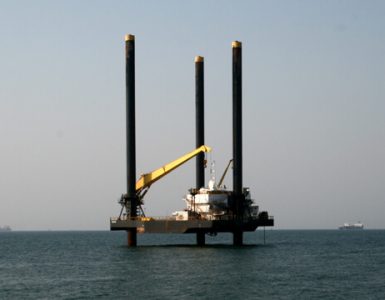Industry Spotlight: Agriculture, Forestry and Fishing
The recent global economic downturn has been largely driven by slow growth in major advanced and emerging economies, which has had a knock-on effect for developing countries. This downturn has been characterized by lower aggregate demand, falling commodity prices and high volatility in financial markets. Consequently, global growth slowed from 4.2% in 2011 to 3.1% in 2015, recovering slightly to 3.2% in 2016. Sub-Saharan Africa’s economic growth averaged 4.8% per annum between 2009 and 2015, and declined to 3.0% in 2016[31].A number of SADC countries have also been affected by adverse weather conditions. The El Nino drought in particular has negatively impacted agricultural production across SADC. SADC agricultural exports grew by an annual average rate of 6.5% from 2009 to 2015, but declined by 12.0% in 2015 as a result of the drought[32]. During 2016, the production of maize, the staple food consumed in the region, recorded a 10.0% decrease from 2015, and a 15.0% drop compared to the average maize production for the past 5 years. The most significant declines in production were reported in Lesotho (70.0%) and Swaziland (59.0%)[33]. Livestock were not spared from the drought, with livestock deaths recorded in Botswana (about 40,000), South Africa (over 200,000), Swaziland (over 63,000) and Zimbabwe (about 22,000)[34].
Climate change has led to severe food insecurity and affected vulnerable segments of the population. Approximately 70.0% of the rural population in SADC depend on agriculture for food, income and employment[35]. SADC governments such as Malawi, Zambia, Tanzania, Mozambique and Zimbabwe were forced to support their domestic agricultural sectors with fertiliser and other agricultural subsidies to improve food security. These governments have little fiscal space however, due to reduced government revenues caused by slow growth, lower agricultural exports and low commodity prices[36]. As Illustrated, in Table 3 below, DRC, Tanzania, Mozambique and Malawi recorded the highest share of agriculture value added as a percentage of GDP, respectively: 20.3%, 31.0%, 25.2% and 29.4% in 2015.
SADC agricultural exports are primarily dominated by semi-processed or unfinished products, indicating that value addition in these sectors remains low[37]. SADC agricultural imports from the rest of the world grew by an annual average rate of 6.0% from 2009 to 2014, but in 2015 food imports from the rest of the world declined by 19.1%[38]. The decline can be explained by weak national currencies within the SADC countries.
The depreciation of SADC national currencies and the poor crop harvest in the region contributed to food import inflation in the region, pushing food prices higher (Malawi’s inflation was estimated at 19.0% and Zambia’s at 21.3% in 2016). The decline in South Africa’s maize production led to a rise in food prices in the region, causing a deficit in the regional market. While countries such as Lesotho, Zimbabwe, Swaziland and Mozambique heavily depend on maize imports from South Africa[39].
The main cereal crops produced in SADC are maize, sorghum, millet, wheat and rice. SADC cereal crop production experienced a drop of 40.3 million tonnes to 38.2 million tonnes between the FY2014/15 and FY2015/16[40].
It is important to note that most SADC countries still depend largely on raw commodity and mineral resource exports. Industrial output is dominated by mining, instead of manufacturing, which has left SADC’s agricultural sector untransformed. This is has made SADC economies vulnerable to external shocks and commodity market fluctuations, which deteriorate terms of trade and foreign exchange earnings. Therefore, it is imperative for SADC countries to transform their manufacturing sector in order to drive growth in agricultural production and output and move away from small-scale and vulnerable agricultural production. This would improve SADC economies’ terms of trade, diversify domestic economies, and stabilise foreign exchange earnings, by complementing commodity and agricultural exports with manufactured exports, which have fewer volatile markets and low elasticity of demand[41].
Figure 3: SADC Agriculture, Forestry and Fishing (AFF) Exports (1995-2015)
Source: UNCTAD 2017. UNCTADStat Database, ibid.
Development and regional industrialisation in SADC should focus on diversifying domestic economies, encouraging regional value-chains and the development of regional production networks. This would allow member countries to capture more value addition and maximise competitiveness from regional and international trade. Low productivity, poor investment, constraints in the energy sector, policy changes and climate change, constitute the major challenges for SADC’s agricultural development, food security and intra-regional trade[42]. These challenges have added pressure to government budgets in countries such as Malawi, Mozambique, Swaziland, Zambia and Zimbabwe, that were the most vulnerable and affected by the 2015 drought[43].
Table 3: SADC Agricultural Production Snapshot, (2010-2014; 2015)
Source: WB 2017. World Development Indicators, World Bank: Washington, D.C. Available At: http://data.worldbank.org/ [Last Accessed: 11 April 2017].
To overcome challenges in domestic policy coherence and limitations in domestic resource mobilization, SADC countries have established the Regional Indicative Strategic Development Plan (RISDP). The RISDP has set a common roadmap for the region to implement policies, and measures to stimulate sustainable agricultural development, food security and foster regional integration through the SADC Regional Agricultural Policy (RAP). The RAP is a binding instrument and a legal framework, underpinning agricultural development in the region. In addition, in July 2016, SADC member states adopted the Regional Agricultural Investment Plan (RAIP 2017-2022), which is the initial phase of implementing the agriculture component of the RISDP. The RAIP prioritises investment in areas where there is the highest local value addition; and focuses on improving productivity, competitiveness, access to markets and trade of agricultural products[44]. Domestic resource mobilisation may remain an obstacle for SADC agricultural development, and so the regional approach may present the region with better prospects of mobilising international finance and capital.
By Serge Hadisi
[31] IMF 2016a. World Economic Outlook: Too slow for Too Long, International Monetary Fund: Washington, D. C. Available At: https://www.imf.org/ [Last Accessed: 15 March 2017]; IMF 2016b. Regional Economic Outlook: Sub-Saharan Africa – Time for a Policy Reset, International Monetary Fund: Washington, D. C. Available At: https://www.imf.org/ [Last Accessed: 15 March 2017].
[32] See Figure 3
[33] SADC 2016. SADC Regional Vulnerability Assessment and Analysis Synthesis Report 2016, Southern African Development Community: Gaborone. Available At: https://www.sadc.int/ [Last Accessed: 16 April 2017].
[34] SADC 2016. SADC Regional Vulnerability Assessment and Analysis Synthesis Report 2016, ibid.
[35] USAID 2017. Agriculture and Food Security, on the United States Agency For International Development Website, viewed on 25 March 2017, from https://www.usaid.gov/; Kanu, B. S., Salami, A. O. & Numasawa, K. 2014. Inclusive Growth: An imperative for African Agriculture, African Development Bank: Abidjan. Available At: https://www.afdb.org/ [Last Accessed: 20 March 2017].
[36] ACB 2016. Farm Input Subsidy Programmes (FISPs): A Benefit for, or the Betrayal of, SADC’s Small-Scale Farmers, African Centre for Biodiversity: Johannesburg. Available At: https://acbio.org.za/ [Last Accessed: 28 April 2017]; SADC 2016b. Regional Situation Update on EI Niño-Induced Drought, Southern African Development Community: Gaborone. Available At: https://www.sadc.int/ [Last Accessed: 18 April 2017].
[37] SARDC 2015. Prospects for Industrial Transformation in SADC: Towards A Regional Strategy and Roadmap, Southern African Research and Documentation Centre: Harare. Available At: http://www.sardc.net/ [Last Accessed: 25 March 2017]; Ngwawi, J. 2012. ‘Global Recession SADC Prepares’, Southern Africa Today, Vol. 14, No. 3. Available At: https://www.sardc.net/ [Last Accessed: 25 March 2017].
[38] UNCTAD 2017. UNCTADStat Database, United Nations Conference on Trade and Development: Geneva. Available At: http://unctadstat.unctad.org/ [Last Accessed: 11 April 2017].
[39] OECD 2016. OECD-FAO Agricultural Outlook 2016-2025, Organisation for Economic Cooperation and Development: Paris. Available At: https://www.oecd-ilibrary.org/ [Last Accessed: 24 April 2017]; WFP 2015a. Food & Nutrition Security Working Group: Issue 1, World Food Programme: Rome. Available At: https://documents.wfp.org/ [Last Accessed: 11 May 2017]; WFP 2015b. Southern Africa Food and Nutrition Security Update: El Niño Seasonal Forecast Oct 2015 to Mar 2016, World Food Programme: Rome. Available At: http://documents.wfp.org/ [Last accessed: 11 May 2017].
[40] SADC 2016. SADC Regional Vulnerability Assessment and Analysis Synthesis Report 2016, ibid.
[41] AfDB 2016. Feed Africa: Strategy for Agricultural Transformation in Africa 2016-2025, African Development Bank: Abidjan. Available At: https://www.afdb.org/ [Last Accessed: 14 March 2017].
[42] AfDB 2016. Feed Africa: Strategy for Agricultural Transformation in Africa 2016-2025, ibid.
[43] SADC 2017a. Regional Indicative Strategic Development Plan, Southern African Development Community: Gaborone. Available At: http://www.sadc.int/ [Last Accessed: March]; SADC 2017b. Regional Agricultural Policy, African Union Development Agency: Midrand. Available At: https://www.nepad.org/ [Last Accessed: 3 April 2017].
[44] SADC 2017a. Regional Indicative Strategic Development Plan, ibid.














































